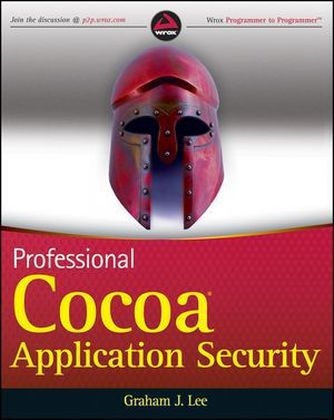
Professional Cocoa Application Security
Wrox Press (Verlag)
978-0-470-52595-1 (ISBN)
- Titel ist leider vergriffen;
keine Neuauflage - Artikel merken
* While Macs are noted for security, developers still need to design applications for the Mac and the iPhone with security in mind; this guide offers the first comprehensive reference to Apple s application security frameworks and features * Shows developers how to consider security throughout the lifecycle of a Cocoa application, including how Mac and iPhone security features work and how to leverage them * Describes how to design, implement, and deploy secure Mac and iPhone software, covering how user configurations affect application security, the keychain feature, how to maximize filesystem security, how to write secure code, and much more Professional Cocoa Application Security arms Apple developers with essential information to help them create Mac and iPhone applications as secure as the operating system they run on.
Graham J. Lee is an independent security contractor, focusing on Mac and iPhone applications. He is a regular speaker on Mac security, and writes the security column for the Mac Developer Network.
Introduction. Chapter 1: Secure by Design. About Cocoa Security. Profiling Your Application's Security Risks. Defining the Security Environment. Defining Threats. Defining and Mitigating Vulnerabilities. Summary. Chapter 2: Managing Multiple Users. Caveat for iPhone Developers. Why We Have Multiple Users. User Groups. Understanding Directory Services. Accessing User Preferences and Managed Preferences. Summary. Chapter 3: Using the Filesystem Securely. UNIX Permissions. Filesystem Flags. Access Control Lists. FileVault and Other Encryption Options. Network Filesystems. Layout and Security of a Typical Mac OS X Filesystem. Aliases and Bookmarks. Quarantining Downloaded Files. Securely Deleting Files. Disk Arbitration. Summary. Chapter 4: Handling Multiple Processes. Privilege Separation. Designing Multiple-Process Systems. Managing Process Lifecycles with Launchd. How to Use Setuid and Setgid. Communication between Processes. Playing in the Sandbox. Guaranteeing Code's Origin. Summary. Chapter 5: Storing Confidential Data in the Keychain. What Is the Keychain? Why Should I Use the Keychain? How to Take Advantage of the Keychain. Keychain on the iPhone. Summary. Performing Chapter 6: Privileged Tasks. How to Acquire Rights. Factored Applications with Authorization Services. The Authorization Database. Why Not to Launch Privileged Tasks with Authorization Services. The Padlock. Authorization Plug-Ins. Summary. Chapter 7: Auditing Im portant Operations. Examples of Auditing. Using Apple System Logger. Basic Security Module. Summary. Chapter 8: Securing Network Connections. Remote Authentication. Privilege Boundaries in Networked Applications. Does 'Bonjour' Mean It's Adieu to Network Security? Working with the Firewall. Network Configuration with SystemConfiguration. Taking Advantage of SSL. Summary. Chapter 9: Writing Secure Application Code. Secure Objective-C Coding. Secure C Coding. Code Reviews and Other Bug-Finding Techniques. Summary. Deploying Chapter 10: Software Securely. Writing Security Documentation. Identify Yourself with Code Signing. Giving Your Code to Your Users. Rolling Your Own Installer. Deploying Privileged Helpers without Installers. Responding to Security Problems. Summary. Chapter 11: Kernel Extensions. The Kernel Environment. Filesystem Access Authorization with Kauth. Summary. Chapter 12: Conclusion and Further Reading. Further Reading. Index.
| Erscheint lt. Verlag | 8.6.2010 |
|---|---|
| Reihe/Serie | Wrox Programmer to Programmer |
| Sprache | englisch |
| Maße | 188 x 233 mm |
| Gewicht | 580 g |
| Einbandart | Paperback |
| Themenwelt | Informatik ► Netzwerke ► Sicherheit / Firewall |
| Informatik ► Programmiersprachen / -werkzeuge ► Mac / Cocoa Programmierung | |
| ISBN-10 | 0-470-52595-9 / 0470525959 |
| ISBN-13 | 978-0-470-52595-1 / 9780470525951 |
| Zustand | Neuware |
| Haben Sie eine Frage zum Produkt? |
aus dem Bereich


